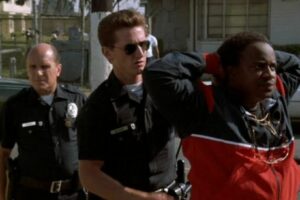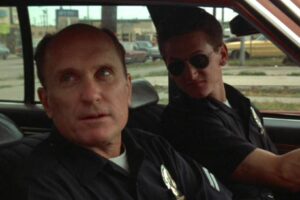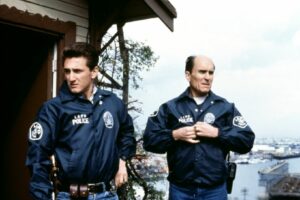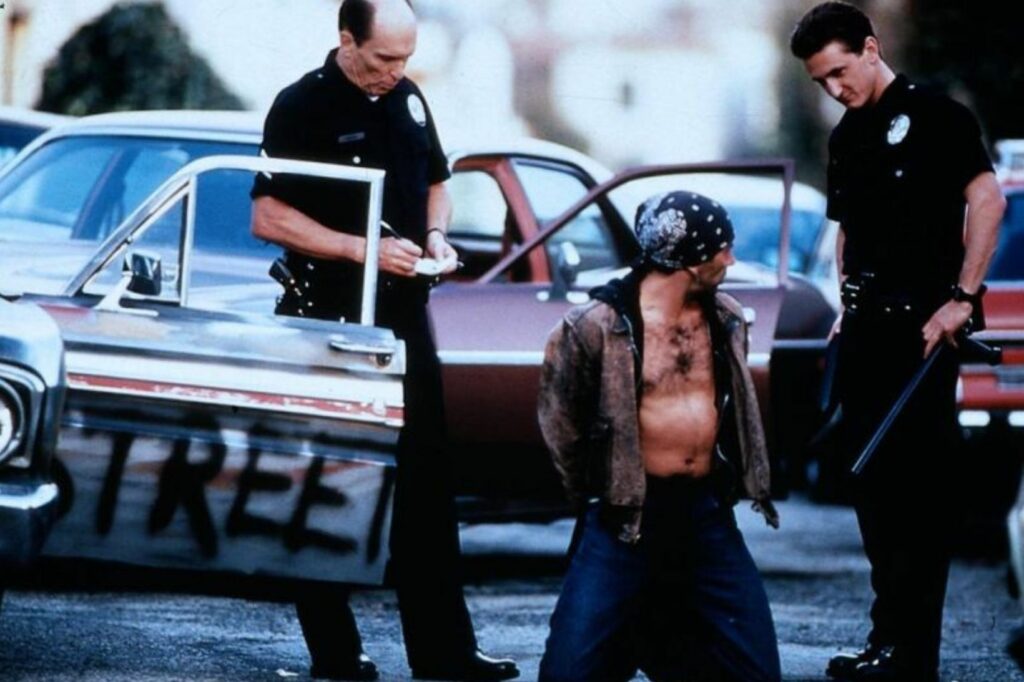In a world where films often transcend mere entertainment, “Colors” stands out as a gritty exploration of urban life and its complexities. Released in 1988, this crime drama delves deep into the gang culture of Los Angeles, offering viewers a raw and unfiltered look at the struggles and tensions that define the city streets. Directed by Dennis Hopper, the film features powerhouse performances by Sean Penn and Robert Duvall, who bring to life the challenges faced by law enforcement and the communities they serve.
“Colors” not only captures the essence of its era but also addresses themes that remain relevant today. The film’s portrayal of the delicate balance between authority and rebellion invites audiences to reflect on issues of race, power, and justice. Through its compelling narrative and authentic depiction of urban conflict, “Colors” continues to resonate with viewers, making it a significant piece of cinematic history worth revisiting.
Watch Colors (Film)
 The film “Colors,” released in 1988, offers a raw depiction of gang life in Los Angeles. Directed by Dennis Hopper, it shines a light on the tensions between law enforcement and the community during a turbulent period. The narrative follows two LAPD officers, played by Sean Penn and Robert Duvall, navigating the fraught environment of gang-ridden neighborhoods. These characters provide a lens into the complex world of urban crime and the societal structures maintaining or disrupting it.
The film “Colors,” released in 1988, offers a raw depiction of gang life in Los Angeles. Directed by Dennis Hopper, it shines a light on the tensions between law enforcement and the community during a turbulent period. The narrative follows two LAPD officers, played by Sean Penn and Robert Duvall, navigating the fraught environment of gang-ridden neighborhoods. These characters provide a lens into the complex world of urban crime and the societal structures maintaining or disrupting it.
“Colors” stands as a noteworthy exploration of authority, rebellion, race, power, and justice. Its portrayal of gang culture reflects on the broader issues affecting urban cities, providing insights into the socio-political climate of its time. The film’s gritty realism, combined with powerful performances, contributed to its lasting impact on audiences and its place in cinematic history.
Plot Summary
“Colors” follows LAPD officers Bob Hodges and Danny McGavin as they partner to tackle gang violence in Los Angeles. Hodges, a seasoned veteran, employs patience and experience to understand the complexities within gang territories, seeking to maintain peace while respecting community dynamics. McGavin, a younger and impulsive officer, displays a confrontational approach, driven by a desire to assert control and swiftly dismantle gang networks.
 Tension arises between the duo due to conflicting methods. Their journey together exposes the layered challenges faced by law enforcement on the streets. The film delves into their investigations, illustrating the escalating tension between rival gangs and highlighting the dangerous yet intricate world of street alliances and enmities. As they patrol troubled neighborhoods, Hodges and McGavin confront moral, ethical, and personal dilemmas while striving to balance duty with compassion. Through their interactions with community members and gang affiliates, the narrative reveals personal stories that challenge stereotypes and emphasize the human element embedded in gang culture.
Tension arises between the duo due to conflicting methods. Their journey together exposes the layered challenges faced by law enforcement on the streets. The film delves into their investigations, illustrating the escalating tension between rival gangs and highlighting the dangerous yet intricate world of street alliances and enmities. As they patrol troubled neighborhoods, Hodges and McGavin confront moral, ethical, and personal dilemmas while striving to balance duty with compassion. Through their interactions with community members and gang affiliates, the narrative reveals personal stories that challenge stereotypes and emphasize the human element embedded in gang culture.
Key Themes
“Colors” intricately weaves themes central to urban and gang culture in Los Angeles. The film’s exploration of authority and power dynamics underpins its narrative.
Exploration Of Race Relations
The film examines the multifaceted aspects of race relations within the community. It portrays the diverse ethnic backgrounds of gang members, illustrating racial tensions and alliances. Through its characters, “Colors” highlights the racial divide that shapes social interactions, presenting a gritty, raw look into how these dynamics impact everyday life. The officers’ interactions with different racial groups expose stereotypes and biases, offering a narrative that questions systemic prejudice.
Depiction Of Police Brutality
 “Colors” confronts police brutality with unflinching realism. It showcases instances where law enforcement’s use of force exacerbates community tensions. Officer McGavin’s aggressive policing style contrasts sharply with Hodges’ experienced approach, shedding light on the spectrum of behavior in law enforcement. Through this depiction, the film exposes the precarious balance between maintaining order and violating rights, inviting viewers to reflect on the consequences of misuse of power.
“Colors” confronts police brutality with unflinching realism. It showcases instances where law enforcement’s use of force exacerbates community tensions. Officer McGavin’s aggressive policing style contrasts sharply with Hodges’ experienced approach, shedding light on the spectrum of behavior in law enforcement. Through this depiction, the film exposes the precarious balance between maintaining order and violating rights, inviting viewers to reflect on the consequences of misuse of power.
Crime Drama
“Colors” stands as a pivotal film that delves into the intricate dynamics of urban life and gang culture in Los Angeles. Through its authentic portrayal, it not only sheds light on the complexities faced by law enforcement but also challenges societal stereotypes. The film’s exploration of themes like authority, race, and justice continues to resonate, offering a lens into the systemic issues that persist today. With its impactful performances, gritty realism, and a soundtrack that captures the essence of the era, “Colors” remains a significant cultural touchstone. It invites ongoing dialogue about policing, community relations, and the delicate balance of power.

